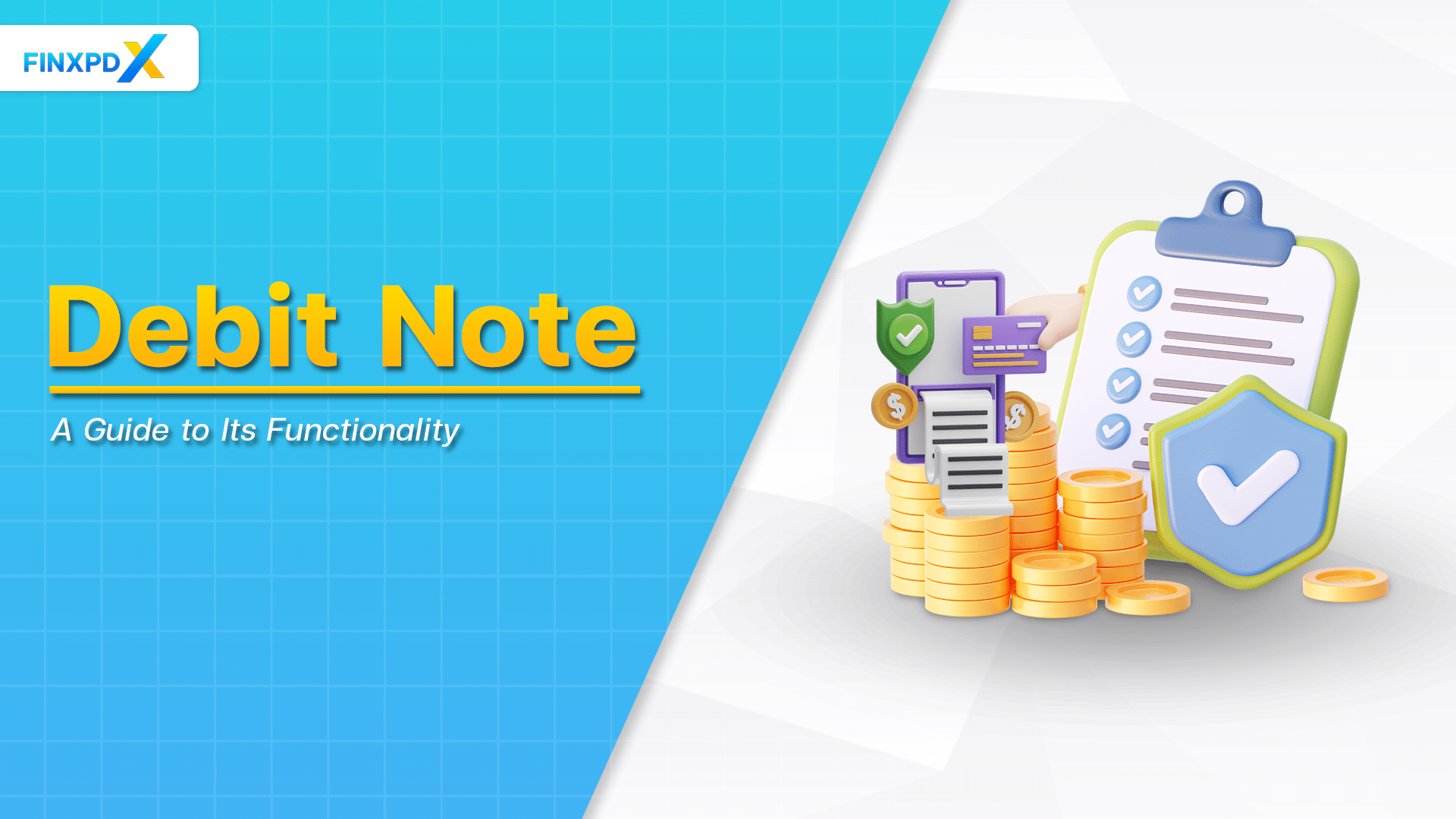In the world of buying and selling, understanding the debit note meaning is crucial. They are official documents that help with a lot of tasks like balancing accounts and solving payment issues. Whether you own a business, work with numbers, or just want to know more. This guide aims to give a comprehensive explanation of what is debit note, its features and how it works.
What Is a Debit Note?
A debit note is an official request from the buyer to the seller for a credit or a reduction in the amount owed. It is typically used in various situations, such as when goods are returned, received damaged, the wrong items are delivered, or an overcharge is included in the original invoice. A debit note is a formal way for the buyer to correct an error in the invoice, making it an important part of the accounts payable process.
Key Takeaways
- A debit note is a formal document showing an amount owed for various reasons.
- A debit note ensures transparency and mutual agreement between buyer and seller.
- Debit notes serve as a record for financial adjustments, aiding in account reconciliation.
- Debit notes contain essential elements like a date of issue, unique identification number, transaction details, amount, and currency.
- Debit notes show the amount owed, while credit notes indicate a credit in the buyer’s account.
How Does a Debit Note Work?
A debit note is usually issued by the buyer and sent to the seller, either through email, regular mail, or a digital accounting system. Once the seller receives it, they check the details like the amount owed and the reason for the debit.
If everything checks out, the seller updates their accounts to reflect the new amount owed. Finally, the account is settled, which could mean the buyer pays the listed amount or further discussions take place if there are disagreements. Once everything is settled, both parties update their financial records.
5 Features of a Debit Note
Understanding these features can help both buyers and sellers manage their accounts more effectively.
1. Date of Issue
One of the most crucial features is the date of issue. This date is vital for accounting purposes, as it helps in tracking the timeline of transactions and financial adjustments.
2. Unique Identification Number
It should have a unique identification number. This number aids in tracking and auditing, ensuring that each transaction is distinct and easily traceable.
3. Details of the Transaction
Contains comprehensive details of the transaction for which it is issued. This includes the names of the buyer and seller, the goods or services involved, and the reason for the debit.
4. Amount and Currency
Contains clearly specify the amount that is owed, along with the currency in which the payment should be made. This clarity is part of what defines the debit note meaning, as it eliminates any ambiguity and helps in faster settlement of accounts.
5. Terms and Conditions
The terms and conditions set the legal framework. The terms and conditions may include payment deadlines, penalties for late payment, and other legal clauses.
5 Advantages of Debit Notes
Beyond simply serving as a formal request for payment, there are additional benefits. Here are 5 key advantages:
1. Error Correction
Debit notes help correct mistakes in invoices, such as overcharges or incorrect quantities, ensuring accurate billing and payment.
2. Improved Record Keeping
By clearly documenting adjustments, debit notes contribute to accurate and organized financial records for both buyers and sellers.
3. Legal Document
A debit note is recognized in accounting regulations as an official document and can be used as evidence in disputes.
4. Enhanced Communication
They serve as a formal communication tool between buyers and sellers, reducing the potential for disputes by clearly stating the reasons for adjustments.
5. Flexibility in Transactions
Debit notes streamline the process of financial adjustments, making it easier to manage returns, refunds, or discrepancies, thus improving cash flow management.
⚠️Tip: Keep a digital copy of all debit notes for easier tracking and auditing.
Differences Between Debit Note and Credit Note
The table below provides a clear, at-a-glance understanding of the differences between debit note and credit note differ in their features and applications.
| Features | Debit Note | Credit Note |
|---|---|---|
| Issued By | Issued by the buyer to the seller. | Issued by the seller to the buyer. |
| Purpose | Requests a reduction in the amount owed by the buyer. | Acknowledges and grants a reduction in the amount owed. |
| Effect on Accounts | Increases the amount the buyer owes to the seller. | Decreases the amount the buyer owes to the seller. |
| Common Scenarios | Buyer requests a reduction due to damaged, incorrect, or returned goods, or overcharges. | Seller confirms a reduction for returns, overcharges, price adjustments, or discounts. |
| Legal Implications | Serves as a formal request and may be used as evidence in disputes. | Acts as a formal acknowledgment of the adjustment, legally binding. |
| Role in Reconciliation | Initiates the process of account adjustment. | Finalizes and confirms the account adjustment. |
Conclusion
In summary, navigating the financial sector involves many forms of paperwork, and understanding a debit note is one of the most important things to consider. It serves as a formal request for adjustments in financial transactions, significantly impacting account reconciliation. Moreover, knowing the differences between debit note and credit note is also crucial. This distinction not only helps in accurate financial record-keeping but also aids in effective communication between buyers and sellers.
FAQs
It is a formal document from the buyer to the seller, indicating an amount owed for various reasons like returned goods or accounting errors.
A debit note, a document issued by the buyer, indicates an amount owed, while a credit note, issued by the seller, serves a different purpose. It signifies a credit in the buyer’s account, which often occurs due to returns or overcharging.
It is neither an invoice nor a credit. The buyer issues a debit note for account adjustments, such as returns or errors, and not for billing goods or services.
From the buyer’s perspective, a sales return results in a debit note. From the seller’s perspective, it results in a credit note.
A bill requests payment for services or goods provided, while a buyer issues a debit note for account adjustments like returns or errors, indicating an amount owed.
Related Articles:
- Gross Salary: What Is It and How to Calculate?
- Depository System: A Security for Transactions
- What Is a Crossed Cheque & How to Cross a Cheque
- 9 Types of Bank Accounts in India: Choose the Right One
Read more: Banking








